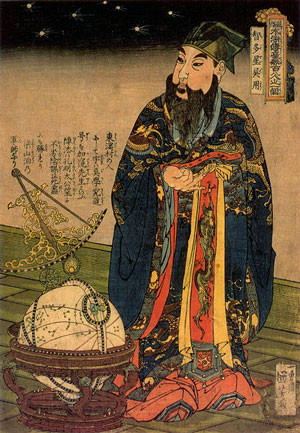
7. Verbiest: Life, Death and After

For the majority of missionaries, the lengthy and dangerous voyage to China was a one-way ticket. They were either not expected or not permitted to return. Although almost deported at the beginning of his residence, Verbiest would spend the rest of his life in China. He was an established figure at the Chinese court who, for a foreigner, enjoyed an unusually close relationship with the Kangxi Emperor. He received the Chinese name Nan Huai-Jen and was buried alongside his Jesuit colleagues and predecessors in Beijing.
His name and reputation remained known in Europe, in part through the continued fame of the observatory and the republication of Verbiest's depiction in various European engraved versions. He also appeared in other cultures, most surprisingly in a garbled form as a Chinese astrologer in a series of 108 Japanese prints of heroes by the 19th-century artist Utagawa Kuniyoshi (shown here). The instruments in this print clearly indicate Verbiest as the subject, though the accompanying text apparently confuses him with another figure.